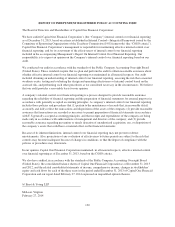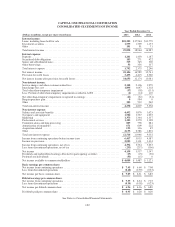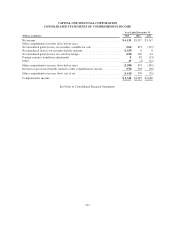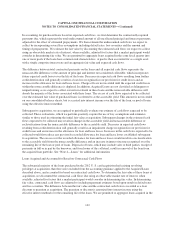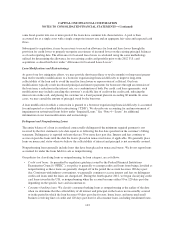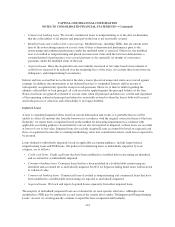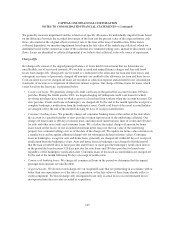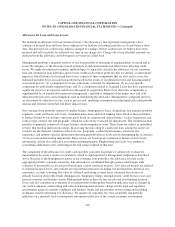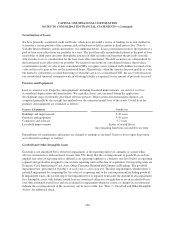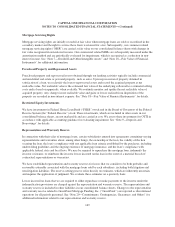Capital One 2013 Annual Report Download - page 160
Download and view the complete annual report
Please find page 160 of the 2013 Capital One annual report below. You can navigate through the pages in the report by either clicking on the pages listed below, or by using the keyword search tool below to find specific information within the annual report.CAPITAL ONE FINANCIAL CORPORATION
NOTES TO CONSOLIDATED FINANCIAL STATEMENTS—(Continued)
Deferred items, including unamortized premiums, discounts and other basis adjustments, are recognized in
interest income over the contractual lives of the securities using the effective interest method. We record
purchases and sales of investment securities on a trade date basis. Realized gains and losses from the sale of debt
securities are computed using the first in first out method of identification, and included in non-interest income in
our consolidated statements of income.
We regularly evaluate our securities whose value has declined below amortized cost to assess whether the decline
in fair value is other than temporary. Amortized cost reflects historical cost adjusted for amortization of
premiums, accretion of discounts and other-than-temporary impairment (“OTTI”) write-down. We discuss our
assessment of and accounting for OTTI in “Note 3—Investment Securities”. We discuss the techniques we use in
determining the fair value of our investment securities in “Note 18—Fair Value of Financial Instruments.”
Our investment portfolio also includes certain acquired debt securities that were deemed to be credit impaired at
the acquisition date, and therefore are accounted for in accordance with accounting guidance for purchased
credit-impaired loans and debt securities. These securities are recorded at fair value at the acquisition date using
the estimated cash flows we expect to collect discounted by the prevailing market interest rate. The difference
between the contractually required payments due and the cash flows we expect to collect at acquisition,
considering the impact of prepayments, is referred to as the nonaccretable difference and recognized in interest
income using an effective yield method over the remaining life of the security. Decreases in expected cash flows
attributable to credit result in the recognition of other-than-temporary impairment. Increases in expected cash
flows are recognized prospectively over the remaining life of the security as an adjustment to the accretable
yield. See “Loans Acquired” in this Note for further discussion of accounting guidance for purchased credit-
impaired loans and debt securities.
Loans
Our total loan portfolio consists of credit card, consumer banking and commercial banking loans that we own and
loans that underlie our securitization trusts. Credit card loans consist of domestic and international credit card
loans as well as installment loans. Consumer banking loans consist of auto, home, and retail banking loans.
Commercial banking loans consist of commercial and multifamily real estate, commercial and industrial, and
small-ticket commercial real estate loans.
Loan Classification
Upon origination or purchase, we classify loans as held for investment or held for sale based on our investment
strategy and management’s intent and ability with regard to the loans which may change over time. The
accounting and measurement framework for loans differs depending on the loan classification, whether the loans
are originated or purchased and whether purchased loans are considered credit-impaired at the date of
acquisition. We used the term “Acquired Loans” to refer to a limited portion of the credit card loans acquired in
the 2012 U.S. card acquisition and the substantial majority of consumer and commercial loans acquired in the
ING Direct and Chevy Chase Bank acquisitions, which were recorded at fair value at acquisition and
subsequently accounted for based on expected cash flows to be collected (under the accounting standard formerly
known as “Statement of Position 03-3, Accounting for Certain Loans or Debt Securities Acquired in a Transfer,”
commonly referred to as “SOP 03-3”).
The classification criteria and accounting and measurement framework for loans held for investment, including
loans purchased, and loans held for sale are described below.
140


